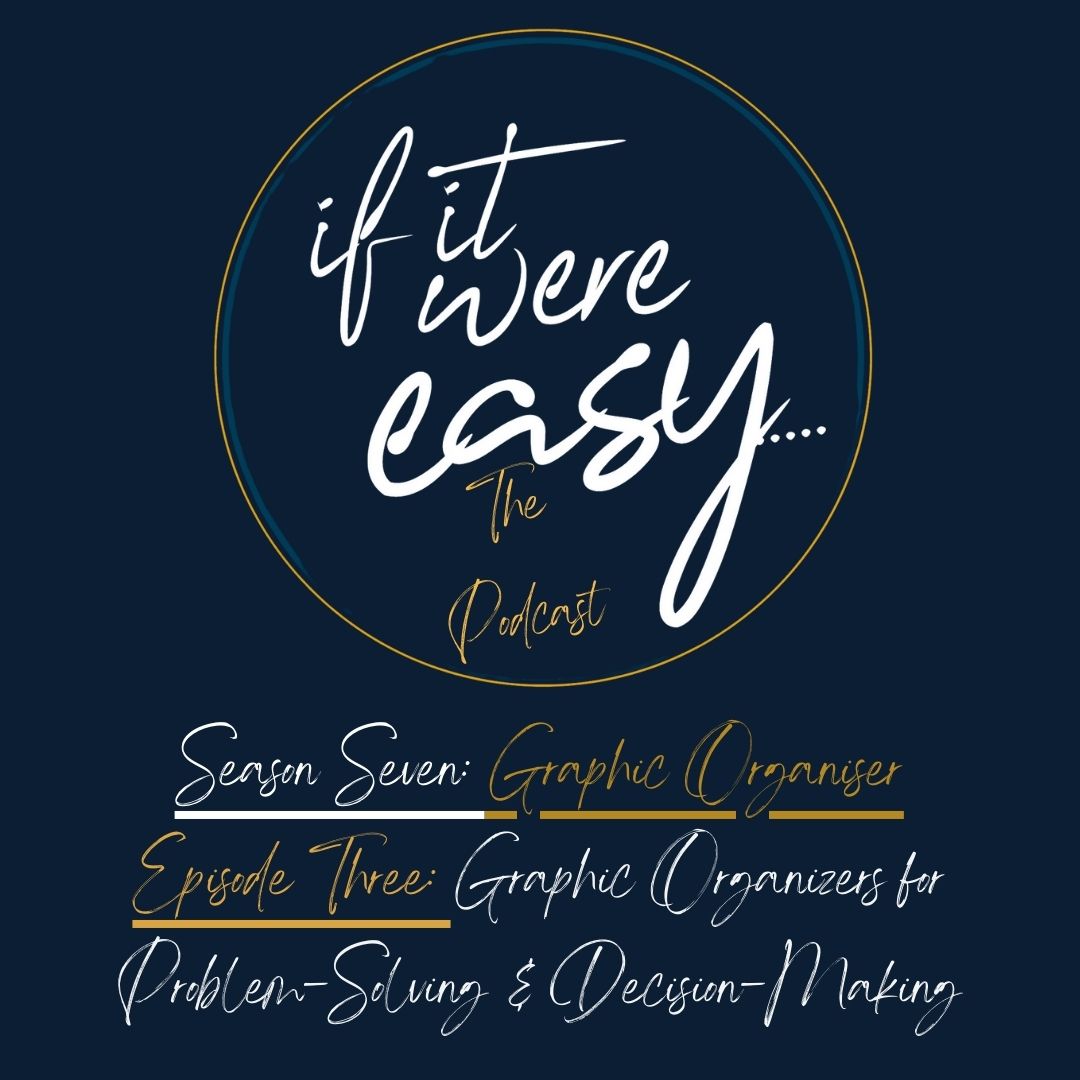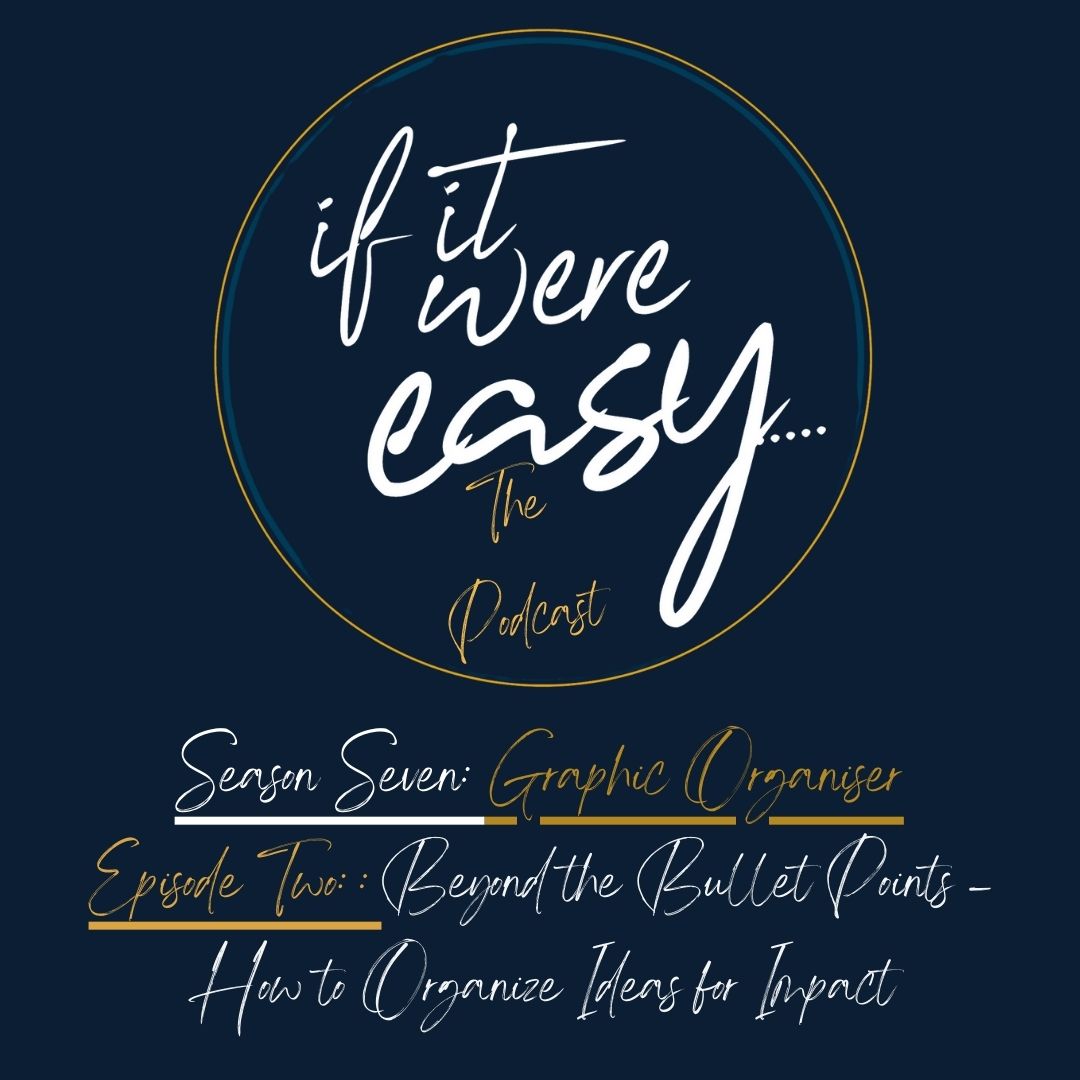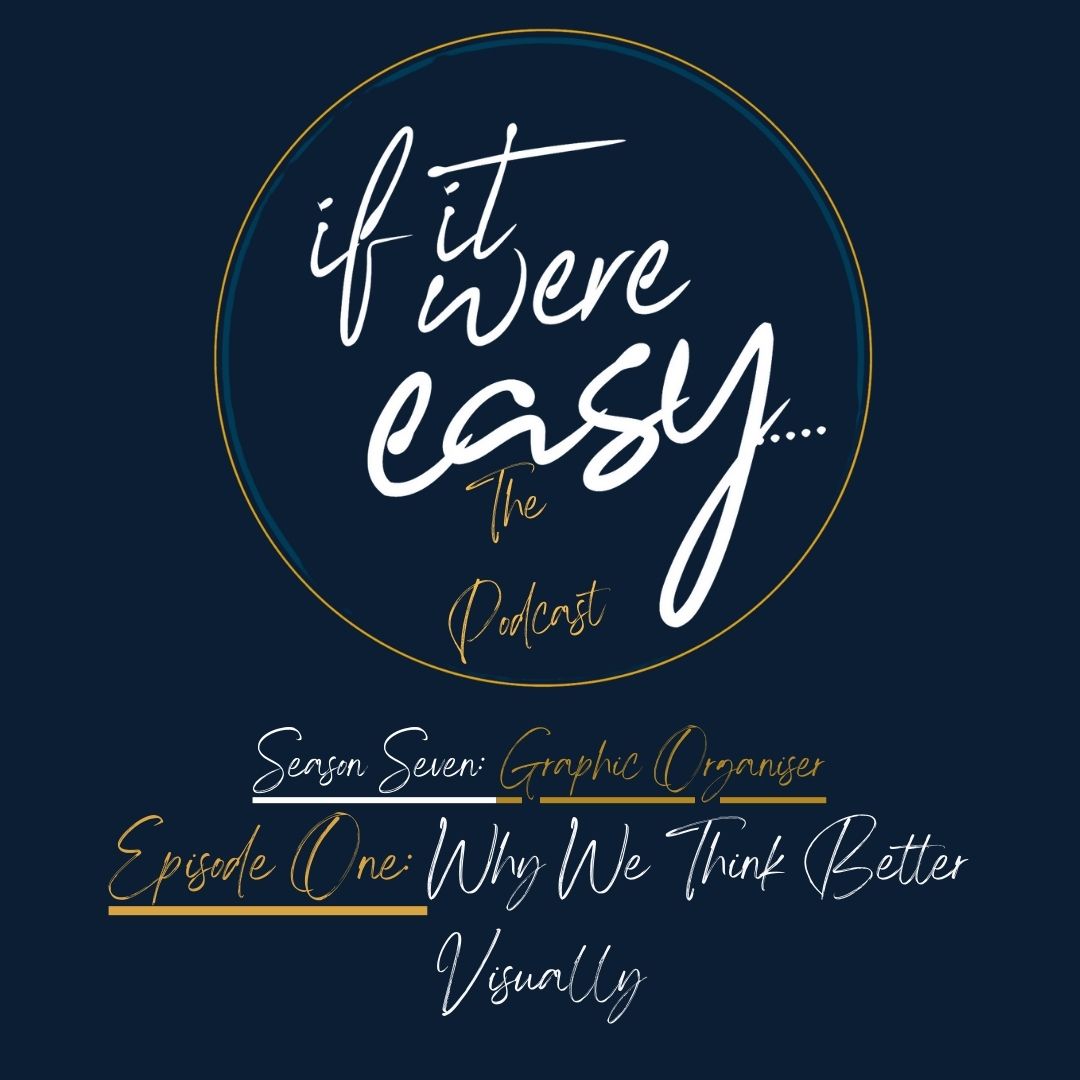Episode 4
Episode Overview
In this episode of If It Were Easy, host Dawn Taylor explores how graphic organizers can be used not only to support student learning but also to help educators structure lessons, assess progress, and enhance engagement.
Many students struggle with organizing, applying, and remembering what they’ve learned. Traditional note-taking methods often result in isolated facts without meaningful connections, leading to short-term recall instead of deep understanding. This episode focuses on how KWL Charts, Spider Diagrams, and Timelines can be used to improve comprehension, retention, and independent learning.
By the end of this episode, educators will have practical strategies to integrate these tools into their teaching, and students will discover how to retain information more effectively, structure their ideas clearly, and track their progress.
Key Topics Covered in This Episode
- Why students struggle to retain information and how structure enhances learning
- How KWL Charts, Spider Diagrams, and Timelines help organize ideas, track progress, and improve recall
- How educators can use graphic organizers for lesson planning, assessment, and student engagement
- How students can use these tools for self-directed learning and long-term retention
Key Takeaways
KWL Charts – Activating Prior Knowledge and Tracking Learning
KWL Charts allow students to organize knowledge in a structured way and track their learning progress. These charts help:
- Before the lesson: Students write down what they Know about a topic
- During the lesson: They list what they Want to learn
- After the lesson: They reflect on what they Learned
This strategy is useful for lesson planning, research projects, and formative assessment to see how student understanding evolves over time.
Spider Diagrams – Breaking Down Complex Topics
Spider Diagrams help students visualize relationships between ideas by breaking down broad topics into subcategories and supporting details.
- In Science: Mapping out the components of an ecosystem
- In History: Categorizing the causes of a historical event
- In English: Analyzing character development and themes in literature
This tool makes abstract concepts more structured, interactive, and easier to recall.
Timelines – Visualizing Sequences and Events
Timelines help students understand chronological order, cause-and-effect relationships, and progression over time.
- In History: Students can plot key events in World War II to see how one led to another
- In English: Tracking character development and major plot points in a novel
- For Project Planning: Setting milestones and deadlines for long-term assignments
Educators can use timelines as a classroom activity or as a project management tool to help students manage their work efficiently.
Applying These Tools in Teaching and Learning
For Educators:
Teachers can use graphic organizers to introduce, reinforce, and assess student learning. These tools support:
- Lesson planning by structuring content logically
- Student engagement by making learning more interactive
- Formative assessment by helping students track their own understanding
For Students:
Students can integrate these tools into their study habits, essay planning, and revision strategies, making learning more structured, clear, and engaging.
For Classroom Engagement:
By incorporating KWL Charts, Spider Diagrams, and Timelines, educators can:
- Encourage collaboration and discussion
- Help students organize their knowledge for long-term retention
- Provide a clearer picture of student progress and comprehension
Challenge of the Week
Try It Yourself:
Choose a KWL Chart, Spider Diagram, or Timeline and integrate it into your next lesson.
Reflection Question:
Did this tool help students structure their thinking more effectively? Did it improve engagement, comprehension, or organization?
Join the discussion at www.ifitwereeasy.org.
Additional Resources
- Blog Series: www.ifitwereeasy.org/blog
- Downloadable Graphic Organizer Templates and Guides: www.ifitwereeasy.org/resources
- Graphic Organizers Course: www.ifitwereeasy.org/course
Stay Connected
Join the conversation on Facebook, Twitter, Instagram, and YouTube. Search “If It Were Easy” to connect with fellow educators and learners.
Subscribe and Review
If you found this episode helpful, subscribe and leave a review. Your feedback helps us continue to provide practical, actionable strategies to improve teaching and learning.
Next Episode Preview
This concludes our series on The Power of Visual Thinking. Join us next time as we launch a new Learning Lens topic, designed to help educators drive positive change in the classroom.
Thank you for tuning in, and we look forward to seeing you in the next episode.




